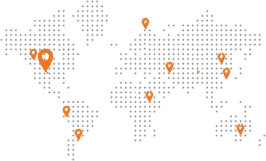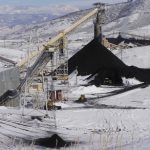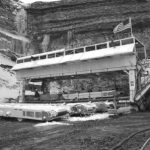28th U.S. Symposium on Rock Mechanics, Tucson, Arizona, 29 June–1 July 1987
Authors: J. F. T. Agapito (AAI) and D. R. Shoemaker (Molycorp, Inc.)
Evaluation of ground stability and support requirements during block caving operations at Molycorp’s Questa Mine was conducted with the help of a simple rock mechanics program consisting of underground mapping and classification of ground conditions, and stability and support monitoring by extensometer measurements. This paper describes how rock quality evaluations based on the Q system, convergence measurements, and computer-aided analysis have proven useful in helping establish the support for a wide variety of rock conditions. The type of supports used consisted basically of three systems, which were generally installed according to the location with respect to the cave, as follows: (1) cast concrete and steel beneath the cave; (2) shotcrete and fully grouted bolts in the peripheral areas; and (3) shotcrete and split sets outside the cave abutment areas. Exceptions to this general rule occur in some locations. Support performance assessment was based on Q evaluations and convergence measurements, as well as roof fall experience. Results indicated that areas of very poor to poor ground need to be supported with steel and concrete or shotcrete and 6-m-long, untensioned, fully grouted bolts, depending upon the location in relation to the cave. Shotcrete and split sets performed well in areas of fair to good quality rock outside the cave abutments. Roof falls were structurally controlled, wedge-type failures, usually associated with water. No falls have occurred where the shotcrete is 50 mm or more in thickness.





